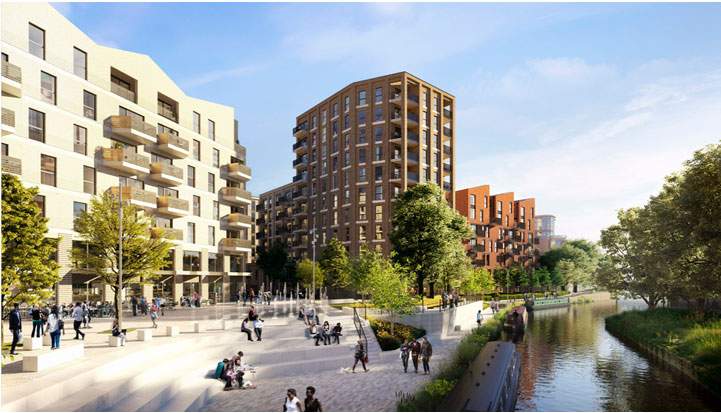With strong appetite from downsizers and investors, Reading is well placed to adjust to the end of Help to Buy
There is huge variation in the new build market across Berkshire, with new build sales since 2020 ranging from flats in Bracknell and Slough selling for under £250,000, to prime new build around Windsor and Maidenhead achieving values in excess of £1.5 million.
Delivery across the county has been split fairly evenly between flats and houses, but in Reading itself, apartment schemes have dominated, accounting for 89% of sales since 2020. Consequently, families make up a very small proportion of buyers in the new build market. The largest age group of buyers are 31–35-year-olds, predominately two adult households with no children.
31% of new build buyers in Reading are downsizers according to Savills dealbook data, compared to 14% across the whole of Berkshire. As this buyer group are less dependent on mortgage finance, the Reading market should therefore remain more robust, despite the current market headwinds. The town has also proven to be an attractive proposition for investors, who comprise 34% of all buyers.
Almost 70% of buyers in Reading are already based in the town or move from elsewhere in Berkshire. The next largest buyer group by origin location are those moving from London, accounting for 12% of buyers. These are often first-time buyers, attracted to Reading by its higher level of affordability compared to London, but still offering good transport links suitable for commuting to the capital.
The town also proves attractive to overseas buyers, primarily moving to London and Berkshire for work, but choosing Reading for its price point and lifestyle offering. Reading has proven to be a popular choice with BN(O) passport holders moving from Hong Kong, drawn by a well-established community of former Hong Kong residents. Savills dealbook data also shows high levels of activity from buyers in the Middle East and China.

Adapting after Help to Buy
With the Help to Buy scheme now closed, a key challenge for all new build developers is how to adapt to a market without Government support. Since the start of the scheme in 2013, Help to Buy supported 747 new build sales in Reading, of which only 30 were not to first-time buyers. In 2020, Help to Buy was used in over 60% of all new build transactions in Reading, but usage of the scheme had dropped by 44% by 2022, suggesting that many developers have already adjusted the type of homes they are building.
The continued strength of the downsizer market in Reading, to whom the Help to Buy scheme already closed in 2021, suggests that the end of the scheme shouldn’t cause too much disruption to new build sales volumes. However, some tenure diversification might be needed for the first-time buyer market. As mentioned in 'In the pipeline', there is strong potential for purpose-built rental stock aimed at this demographic. Shared Ownership, which in 2021/22 only amounted to 6% of supply, is likely to also be an attractive option for those who would have otherwise used Help to Buy.
Read the articles within Spotlight: Reading – positioned for growth below.
.jpg)

